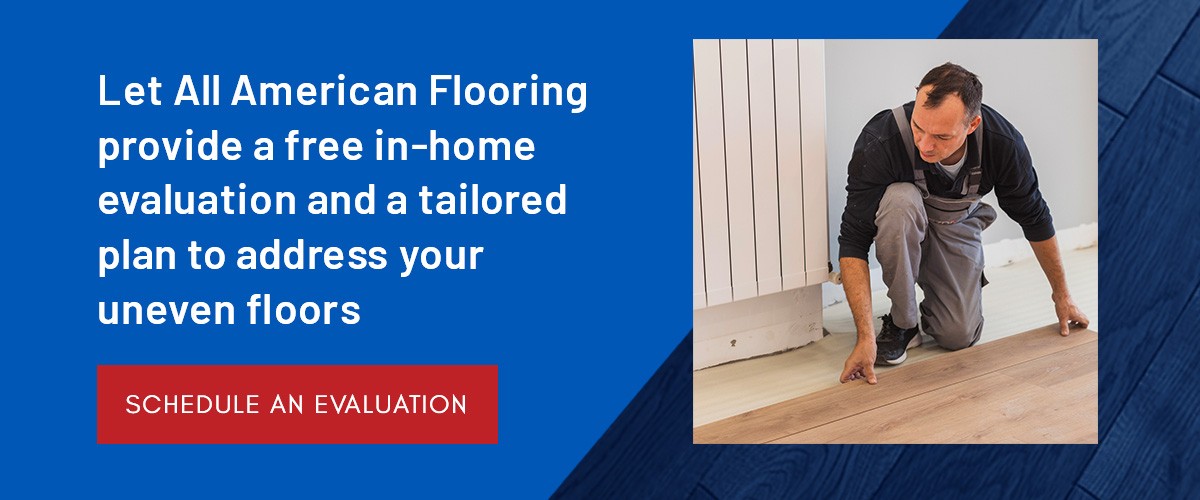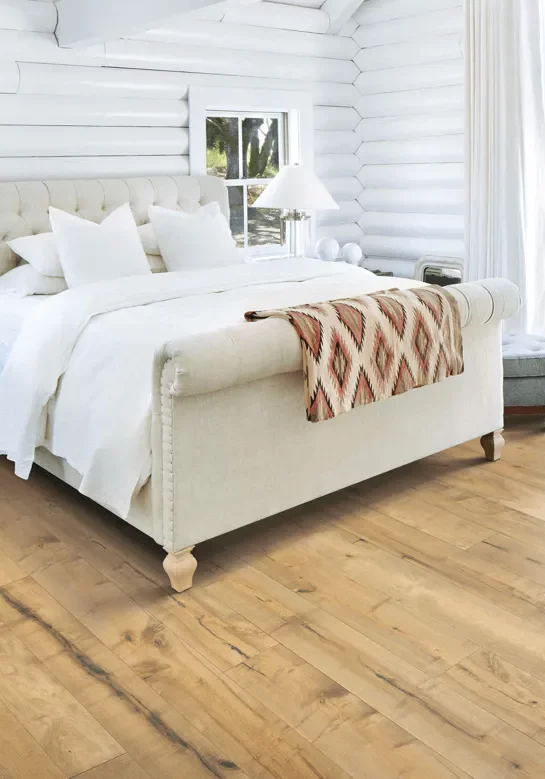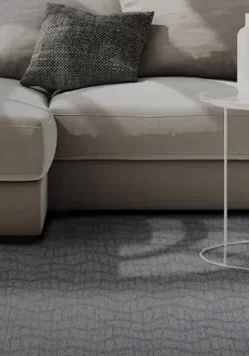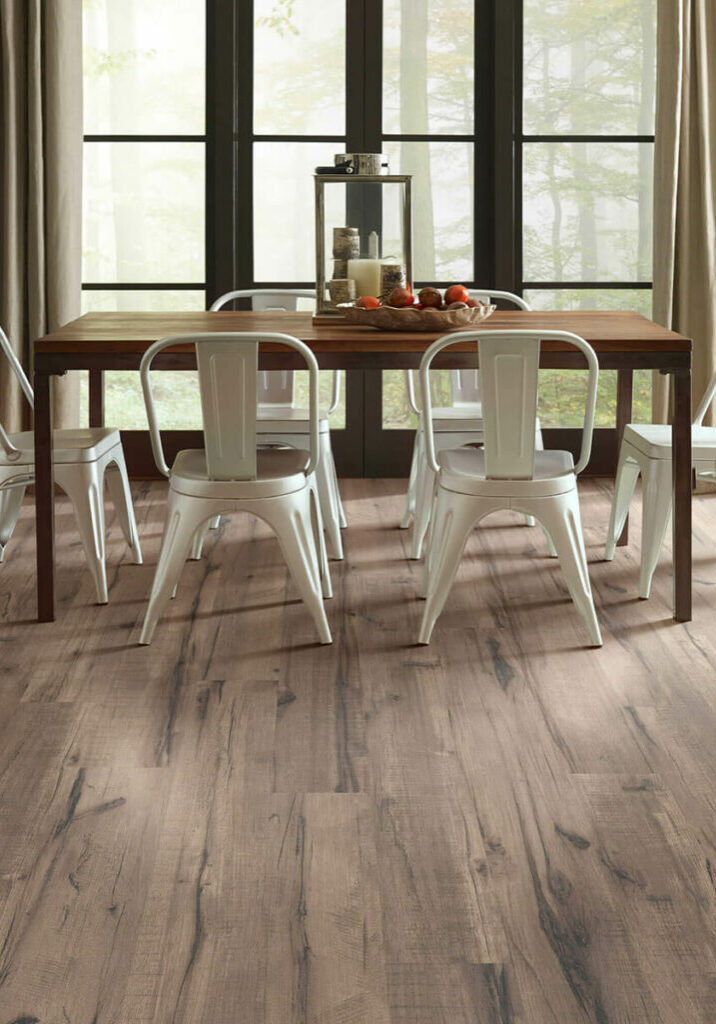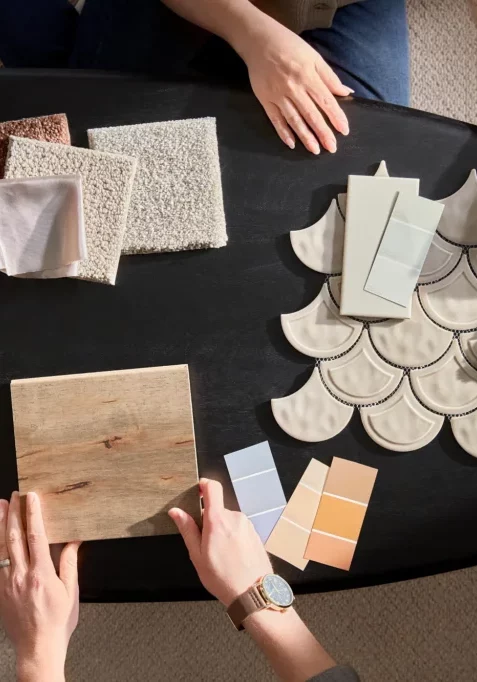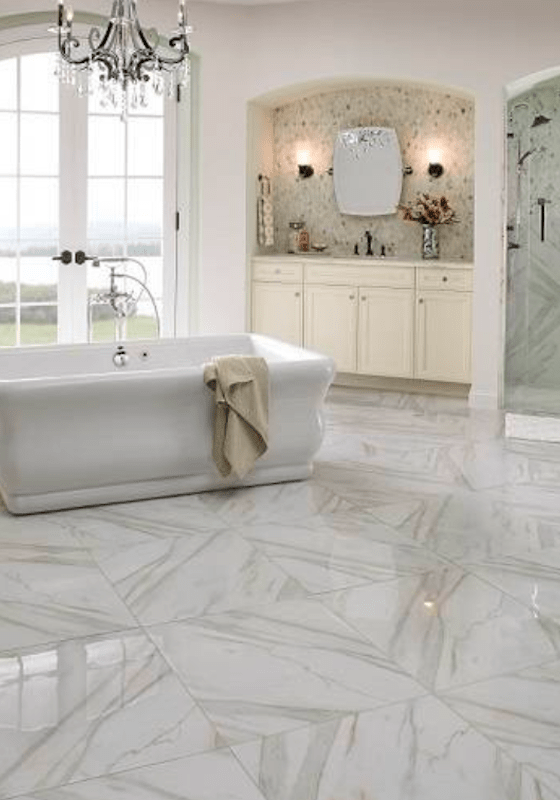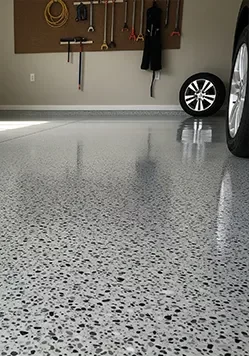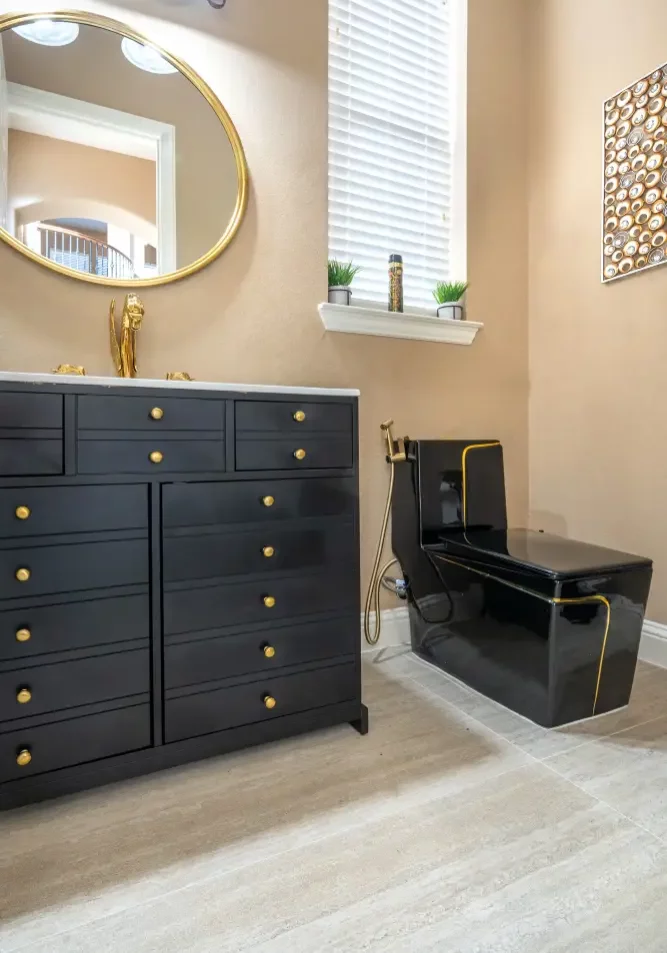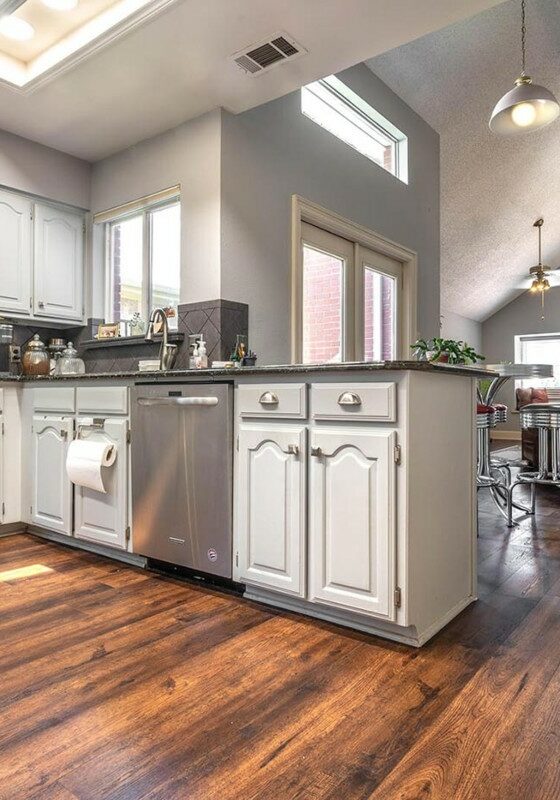A Homeowner’s Guide on How to Fix Uneven Floors

Uneven floors are one of those home issues that can sneak up on you. Maybe you notice a ball rolling across the living room on its own, a door that cannot fully close or a floorboard that dips slightly underfoot. While these quirks can feel unsettling, the good news is that most uneven floor problems can be understood, diagnosed and fixed.
For homeowners in Dallas-Fort Worth and beyond, learning how to fix uneven floors starts with understanding what’s really causing the slope. Once you identify the root of the issue, you’ll know whether it’s a simple weekend project or something that requires a professional’s expertise.
First, Find the Cause of the Slant
Uneven floors are a sign of what’s happening underneath. Common causes include:
- Natural settling: Over time, every house shifts a little as the ground beneath it adjusts. This can create gentle slopes that are often more of a cosmetic concern than a safety issue.
- Moisture damage: Water is a common cause of uneven bathroom and kitchen floors. Dampness can weaken wood supports and lead to sagging. Proper maintenance of hardwood can help prevent uneven wood flooring, but it’s often best to choose other materials in moisture-prone spaces.
- Soil and foundation shifts: Clay soils are common in Texas. They expand and contract with moisture changes, putting stress on foundations and floors above them.
- Improper structural support: In some cases, undersized joists, poorly spaced beams or makeshift repairs from the past can lead to uneven floorboards today.
How to Diagnose Uneven Floors
Here are some homeowner-friendly ways to investigate where and how your floors are uneven.
1. Mapping Your Floors
Start by mapping out your floors to see exactly where they’re uneven. This step will help you determine whether you’re dealing with isolated dips or a systemic tilt that requires deeper inspection. You can do this with simple tools, like a 4-foot or 6-foot carpenter’s level, a string line or even a laser level.
Place the level in different areas, noting where the bubble drifts or the line pulls away from the floor, and look for patterns. A slight dip in one spot may point to a local issue, such as a sagging joist. A broad slope across a room or an entire side of the house often signals foundation movement.
2. Checking for Structural Red Flags
Once you’ve mapped your floors, take a closer look underneath whenever possible. Head to the basement, crawl space or lower level and look for signs of stress, such as sagging joists or beams. Pay attention to any cracked beams or posts — these structural cracks indicate that support needs reinforcement.
You can also check outside for exterior clues. Look at your foundation walls or brick siding for hairline cracks, stair-step cracks or separation at corners. Pay close attention to stair-step cracks in brickwork or any cracks wider than a quarter-inch, as these often signal significant movement.
These checks are crucial for homeowners wondering how to fix sloping floors. They’ll help you determine whether the solution is a simple patch or a larger structural repair.
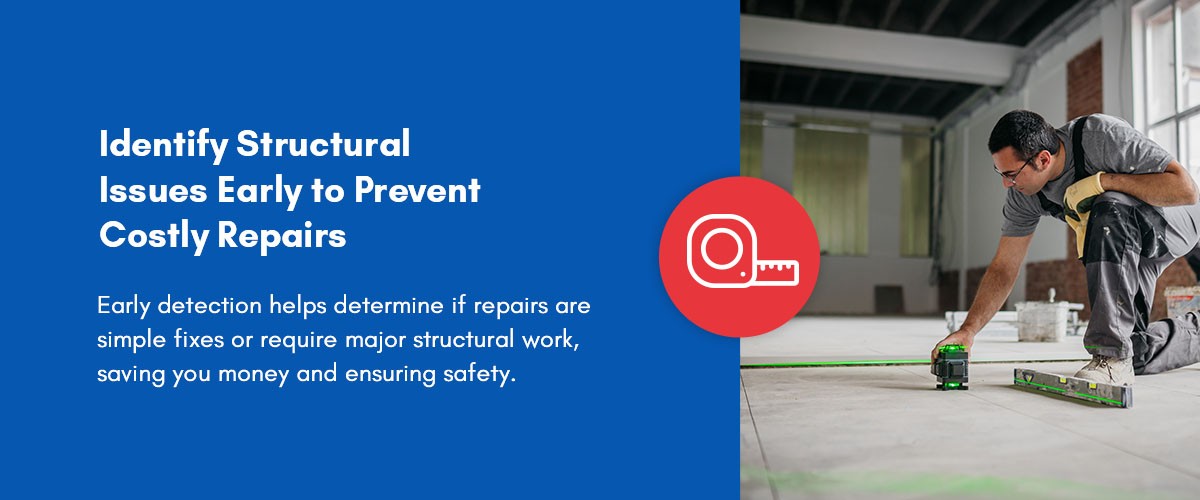
3. Investigating Moisture and Pests
Unevenness near bathrooms, kitchens or exterior walls is often a result of water or pest activity. Keep an eye out for:
- Water damage: Red flags include stains, soft spots, or musty odors around flooring or subflooring.
- Termite activity: Fine sawdust, mud tubes along walls or hollow-sounding wood when tapped may indicate termites.
- Humidity impact: High humidity can swell wood and create dips in crawl spaces.
Spotting or ruling out these issues early is key to fixing unlevel floors in a way that lasts.
Solutions for Leveling Your Floors
You’ve pinpointed the issue — now it’s time to explore solutions. These range from simple fixes to more advanced structural work.
Fixing Minor Dips and Sags
For small and localized uneven spots, you can often handle repairs yourself. Two options include:
- Self-leveling underlayment: This is a liquid compound poured onto a concrete or wood subfloor that evens out shallow depressions, typically those up to 1 inch deep.
- Securing the subfloor: Use construction screws to refasten loose subfloor panels to the joists below. This can eliminate squeaks and minor movement.
These methods are practical for homeowners wondering how to repair uneven flooring or smooth out floorboards before installing new finishes.
Addressing an Uneven Bathroom Floor
Bathrooms present a unique challenge because of constant moisture. To fix them effectively, you can try:
- Solving moisture first: Repair leaks, improve ventilation and ensure the subfloor is dry.
- Waterproofing: Apply waterproofing membranes or coatings before adding leveling materials.
- Applying leveling compound: Use a bathroom-rated self-leveling product for lasting results.
This way, you’re covering up dips and protecting the bathroom floor against future unevenness.
Fixing Uneven Floors in an Old House
Older homes come with charm and a few quirks. Uneven floor transitions and slight sloping are often part of their character, reflecting decades of natural settling. For homeowners wondering how to fix uneven floors in an old house, the answer often lies in balancing preservation with practicality.
Make sure doors close properly and furniture sits safely, even if the floors aren’t perfectly flat. If unevenness affects safety or daily function, professional repairs may be needed.
When to Call a Professional
Handy homeowners can address some causes of uneven floors, but others require trained expertise. Understanding the line between DIY and professional repairs will help you tackle the right projects with confidence while leaving complex jobs in the most capable hands.
Jobs you may be able to handle yourself include:
- Applying self-leveler
- Re-securing a squeaky subfloor
- Adding small shims
It’s best to call a professional to reinforce joints with sistering or replace beams. Foundation repairs also demand specialized equipment and knowledge, especially in soil-rich regions like Dallas-Fort Worth. Professionals may recommend methods such as:
- Piering: Installing deep supports that stabilize the foundation
- Mudjacking or slabjacking: Lifting concrete slabs back into place by pumping material beneath them
These solutions address the source of uneven floors, giving you a stable and lasting fix.
Get a Professional Plan for Your Floors
Even with the best DIY skills, diagnosing and repairing uneven floors can get complex. That’s why having an expert evaluation is invaluable. A professional can identify whether the issue is cosmetic or structural. You’ll get clear answers about what repairs are necessary now and which aren’t urgent. An expert plan saves time, prevents guesswork and protects your home’s value.
At All American Flooring, we’ve been helping Dallas-Fort Worth homeowners with flooring challenges since 1989. Our team can provide a free in-home evaluation to give you precise answers and a tailored plan for fixing your uneven floors. Schedule it online or visit your nearest showroom to talk in person.
